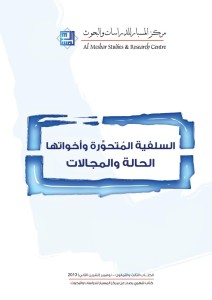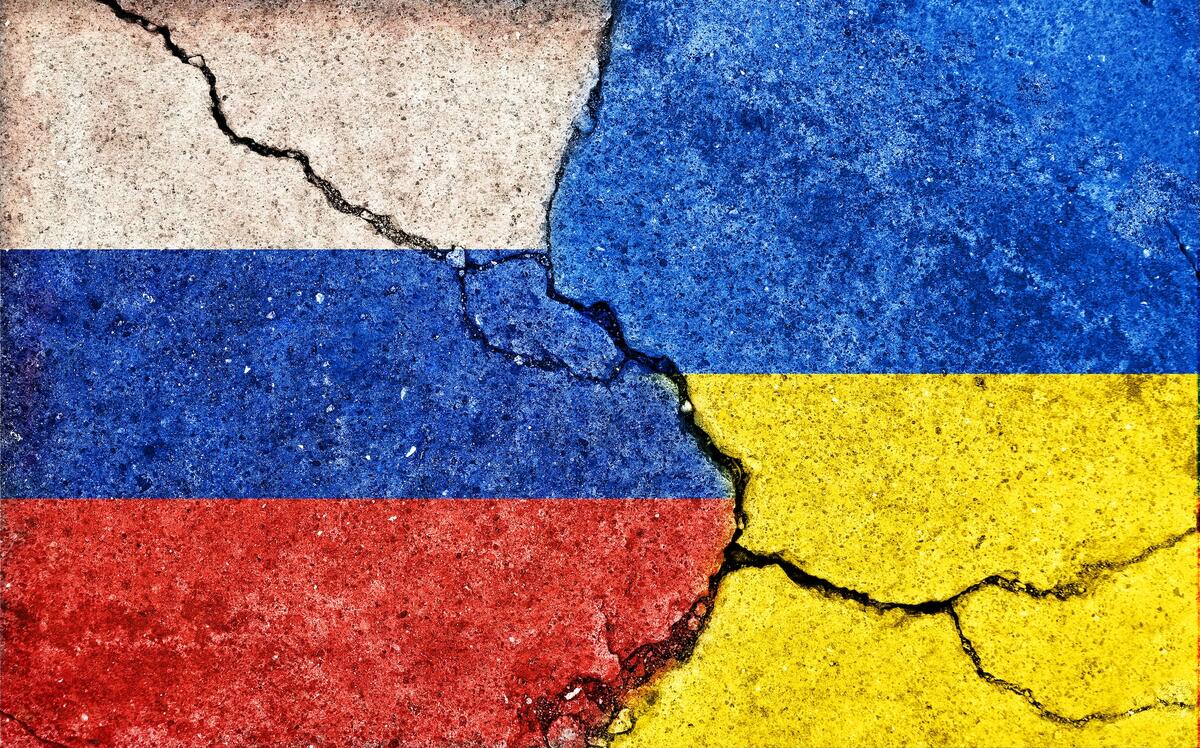Have Salafi groups turned a corner since the Arab revolutions? Is Salafi discourse changing since the entry of some Salafis into the political arena — particularly in Egypt? Might the fall of the Muslim Brotherhood in Egypt pave the way for an expansion of Salafism, or will it more likely cause Salafism to recede? And would one be going too far in suggesting that there is a new shade of Salafism, distinct from its antecedents, that could be called “political Salafism”?
Al-Mesbar Center’s 83rd monthly book, Salafi Mutations in the Arab World Today, strives to answer these questions.
The first paper, “Winding Paths: Salafis in the Midst of Democratic Change,” was penned by Egyptian scholar Muhammad Hilmi Abd al-Wahhab. He puts contemporary Egyptian Salafism in the historical context of some of the early Salafi groups, notably Jama’at Ansar al-Sunna al-Muhammadiya and Jam’iyat al-Shar’iya — and explains how these groups managed to grow the movement and alter the fabric of Egyptian Islamic culture. He draws a key distinction between Salafis and the Muslim Brotherhood, in that the former do not rely on a hierarchical leadership structure to do their work. Abd al-Wahhab finds that the past five years have seen a sea change in the history of Egyptian Salafism, in large part due to religious satellite channels that have provided a massive platform for Salafi preachers formerly confined to smalltime mosques. After the January 25, 2011 revolution, despite having stood on the sidelines of the popular demonstrations, Salafis used their new freedom to claim a uniquely Salafi revolutionary space — as manifested by new politically oriented groups such as the “Coalition of Islamic Egyptian Youth” and the “Shari’ah Organization for the Protection of Rights and Freedoms.” Abd al-Wahhab also examines the remarkably pragmatic Salafi Nur party, which has presented itself as an alternative to the Muslim Brotherhood.
Next, Syrian researcher Hammud Hammud presents his study of Islamist fighters in Syria, “The Jihadists of Damascus: Between Holy Jihad and Sectarian Jihad.” He argues that in much the way one can’t be sure when Salafis will move from ideological propagation to military action, one also can’t be sure whether or when the Muslim Brotherhood in Syria will do the same. Hammud trains his eye on Shi’i as well as Sunni jihadists in Syria, who seem to feed off each other in a cycle of “jihad” and “counter-jihad,” in his view The author pays special attention to the most ideologically extreme groups among both sects, notably the the Sunni “Islamic Da’wa in Iraq and Syria,” and “Jabhat al-Nusra,” as well as the Shi’ite Hezbollah, Brigades of Sayid al-Shuhada, and the Brigade of Abu ‘l-Fadl al-Abbas. He also examines the phenomenon of foreign jihadists in Syria, dwelling in each case on the sectarian dimension of their militant activity.
In “The Salafi movement in Lebanon: from Da’wa to Jihad,” Lebanese researcher Haytham Mazahim reports on Salafism in Lebanon. The country’s Salafis are found predominantly in the northern Lebanese city of Tripoli and other parts of the country with large Sunni concentrations. Mazahim attributes the growth of Salafism in his country to two factors: first, the political vacuum among Sunnis following the ouster of the government of Sa’ad al-Hariri in late 2010 and his departure from the country; and second, the failure of traditional Sunni religious leaders to address the country’s domestic woes or the crisis in Syria. The researcher recounts the history of Lebanese Salafism, from its inception to the emergence of its leadership to the evolution of its discourse and its relationship with the political system and the security apparatus. Salafis have grown considerably more prominent due to the fighting in Syria, he notes, and calls by the likes of Lebanese Salafi preacher Ahmad al-Asir to wage jihad in defense of Syrians and against Hezbollah. While noting that there remains such a thing as “traditional Salafism” which is not engaged in lethal violence, Mazahim pinpoints a range of groups linked to Al-Qaeda that pose a potential challenge to Lebanese, regional, and international security. These include the groups controlled by Saudi activist Majid al-Majid and Palestinian Salafi Ziad Abu ‘l-Na’ajih. There are also Salafi paramilitary groups on Lebanese soil that are an outgrowth of the Syrian conflict. Further lethal groupings may be found in the Lebanese northern border town of Arsal — not to mention sleeper cells in other parts of the country. Mazahim concludes by calling on decision makers in Lebanon to assess the dangers of Salafism in Lebanon today — not just the government and security apparatus, but also Salafis themselves. In particular, the researcher urges Salafis with a moderate disposition to shun terrorism, preach tolerance, and resist the temptation to engage in sectarian bloodshed.
Next, Abd al-Hakim Abu ‘l-Lawz, a Moroccan specialist in the sociology of religion, examines Salafism in his own country, breaking down Morocco’s Salafi scene into distinct categories. Some groups, on the radical side of the Salafi spectrum, were born of the leadership schism that arose during the 1991 Gulf war. Others have tempered their narrow sectarian allegiance, as a result of their interplay with a broader swath of local society. A different grouping of Salafis in Morocco draw inspiration from the nineteenth-century Egyptian Islamic reformist Muhammad Rashid Ridha. A final designation, according to Abu ‘l-Lawz, is the community of self-identifying Salafis who grew out of schisms within Morocco’s traditional religious institutions. The paper, titled, “Salafism As a Social Movement,” focuses primarily on one organization which is considered to be the most popular and widespread in Morocco: Jam’iyat al-Da’wa ila ‘l-Qur’an wa ‘l-Sunna. Abu ‘l-Lawz studies the group from three angles: historical inception, anthropological analysis of its discourse, and geographical distribution of its followers. The author shows that on the one hand, Moroccan Salafism calls for adherence to pristine values and morals, but on the other hand, exploits this discourse to advance narrow, parochial agendas and interests.
Saudi researcher Mansour al-Nogaidan’s study, “Political Islam and Violence and its Future in the Gulf,” trains the spotlight on the fiqh, or Islamic jurisprudential reasoning, of Islamist groups in the Gulf which have adopted a strategy of armed attacks since their inception. Nogaidan demonstrates how these groups use particular interpretations of Qur’an and prophetic tradition to both justify their actions and judge their opponents to be infidels. Such interpretations, he explains, have roots in the dire circumstances of some Muslim societies on the eve of modernity — but there is also an updated jihadist fiqh which is wholly modern. It was born out of the vacuum of authority following the destruction of traditional Islamic ruling dynasties and the fall of the Ottoman empire. The vanishing of caliphal authority — and widespread hopes to reestablish it — gave jihadists a deeply rooted basis to claim authenticity within their societies. Their ideology had begun to emerge by the mid-19th century, but did not even begin to acquire its current magnitude and strength until the late 1970s.
Jordanian researcher Muhammad Mustafa, in his study, asks whether Egyptian Salafists, after their country’s January 25th revolution, have in some way usurped the mantle of Wahhabism. The revolution may well have represented an epochal moment: Egyptian Salafis founded their own political party, “Hizb al-Nur,” and managed to win approximately 23 percent of the seats in the 2011-12 parliament. Mustafa believes that in doing so, Egyptian Salafis created a new historic paradigm for Salafi activism — and consequently, a structural change in Salafi discourse. Now sister movements in other states in the region appear to be viewing Egyptian Salafism as an alternative model — perhaps preferable to Saudi Wahhabism.
Al-Mesbar Center editorial board member Rita Faraj contributes a rare interview with a founder of Lebanese Salafism, an Islamist preacher known as “Al-Shahhal.” Among other matters, they discuss the ouster of Egypt’s Muslim Brotherhood-affiliated president, Muhammad Morsi. Al-Shahhal attributes the Brotherhood’s fall to three factors: first, their exclusion of all other political streams from the halls of power; second, turning their backs on the majority of Egyptians; and third, ignoring the dangers posed by Iran. In essence, he tells Faraj, the movement’s narrow agenda took priority over the needs of the population and the logic of statecraft. Also in the discussion, Al-Shahhal addressed such questions as whether a Coptic woman should be allowed to serve as president of a Muslim country, his position on the Jabhat al-Nusra organization in Syria, and the relationship between his group and Saudi Arabia. In response to the latter question, Al-Shahhal described the Kingdom as a “compassionate father and reassuring mother.” As to whether he receives Saudi support, he said that the Kingdom supports governments and official institutions. It is through legal and legitimate means that support can be received — such as mosques, health clinics, and educational and social facilities.
Next, Jordanian researcher Muhammad Al-Awawdeh addresses the inception and development of the Palestinian Hamas, as well as Egyptian, Syrian, and Iranian influence on the movement. He speaks in particular to one of the principal questions posed by observers of Hamas since the June 30th revolution: How will the movement respond to the weakening of its crucial ally, the Egyptian Muslim Brotherhood? Awawdeh presents information suggesting that Hamas is working to resolve its longstanding disputes with Salafis and establish a working “truce.” Such an arrangement would enable Hamas to win back some access, freedom of movement, and perhaps some space for military training. But will Hamas really bet its future on a relationship with the Salafis?
Also in this volume, Al-Mesbar Center presents a report on Islamism in Turkey since October 2013. Tariq Abd al-Jalil, an Egyptian researcher and academic specializing in Turkish issues, shares a readout on the popular discussion in the Turkish press regarding five poignant matters: (1) the potential lifting of the national ban on the Muslim headscarf (hijab); (2) the ruling Turkish Justice and Development Party’s outlook on regional developments following the ouster of Egyptian president Muhammad Morsi on June 30th; (3) the opening of a museum on the life of the progenitor of modern Turkish Islamism, Bediüzzaman Said Nursî; (4) Turkish president Abdullah Gul’s embarkation on the Haj; and (5) Turkish opposition to the launch of the Marmaray rail transport project on the national holiday commemorating Turkish statehood.
Al-Mesbar editorial board member Ibrahim Amin Nimer contributes to this issue a review of a new book, Salafis and the Arab Spring, by Muhammad Abu Rumman. The book examines the entry of Salafis into the fray of political activism and tries to determine their position on democracy, the civil state, attitudes toward Egypt’s Coptic Christian minority, and the extent to which Salafis looks to the Brotherhood as a model.
Al-Mesbar Center would like to thank all the researchers who contributed to this volume — and convey special thanks to editorial board member Omar al-Bashir al-Turabi, who coordinated the production of the book.










